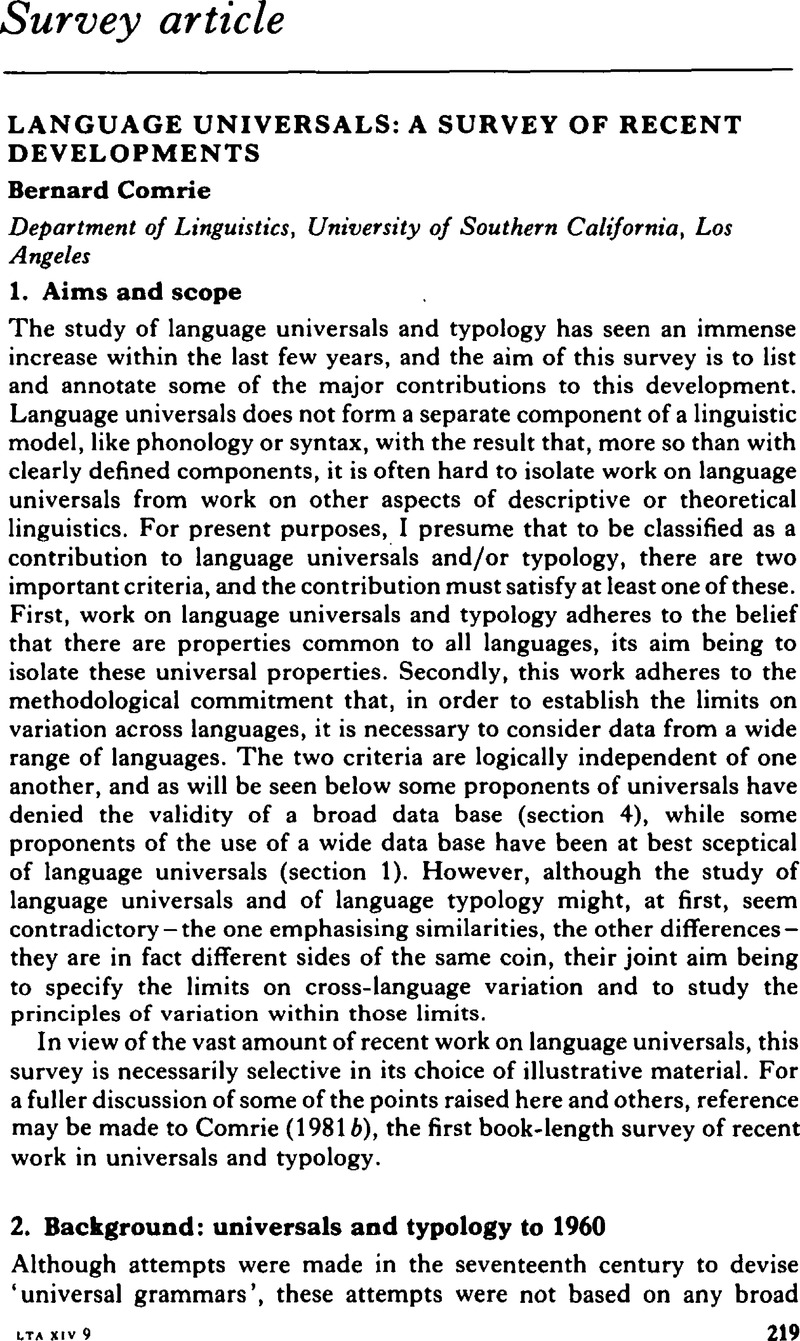Crossref Citations
This article has been cited by the following publications. This list is generated based on data provided by Crossref.
1987.
Linguistic Typology.
Last updated 09/07/24: Online ordering is currently unavailable due to technical issues. We apologise for any delays responding to customers while we resolve this. For further updates please visit our website: https://www.cambridge.org/news-and-insights/technical-incident

Published online by Cambridge University Press: 23 December 2008
